Low-Profile Broadband Dual-Polarized Dipole Antenna for Base Station Applications
Abstract
1. Introduction
2. Antenna Design and Configuration
3. Analysis and Discussion
3.1. In-Phase Reflection Bandwidth of the AMC Unit
3.2. Brillouin Dispersion Diagram of the AMC Unit
3.3. Evolution of the Antenna
4. Results
5. Conclusions
Author Contributions
Funding
Institutional Review Board Statement
Informed Consent Statement
Data Availability Statement
Acknowledgments
Conflicts of Interest
References
- Huang, C.; Zappone, A.; Alexandropoulos, G.C.; Debbah, M.; Yuen, C. Reconfigurable intelligent surfaces for energy efficiency in wireless communication. IEEE Trans. Wirel. Commun. 2019, 18, 4157–4170. [Google Scholar] [CrossRef]
- Li, Q.L.; Cheung, S.W.; Zhou, C.F. A low-profile dual-polarized patch antenna with stable radiation pattern using ground-slot groups and metallic ground wall. IEEE Trans. Antennas Propag. 2017, 65, 5061–5068. [Google Scholar] [CrossRef]
- Zhang, X.; Xue, D.; Ye, L.; Pan, Y.; Zhang, Y. Compact dual-band dual-polarized interleaved two-beam array with stable radiation pattern based on filtering elements. IEEE Trans. Antennas Propag. 2017, 65, 4566–4575. [Google Scholar] [CrossRef]
- Liu, Y.; Li, X.; Yang, L.; Liu, Y. A dual-polarized dual-band antenna with omni-directional radiation patterns. IEEE Trans. Antennas Propag. 2017, 65, 4259–4262. [Google Scholar] [CrossRef]
- Dai, X.W.; Ding, C.; Zhu, F.; Liu, L.; Luo, G.Q. Broadband dual-polarized element with rotated sleeve arms for compact dual-band antenna. IEEE Antennas Wirel. Propag. Lett. 2021, 20, 2519–2523. [Google Scholar] [CrossRef]
- Wu, R.; Chu, Q.X. A wideband dual-polarized antenna for LTE700/GSM850/GSM900 applications. IEEE Antennas Wirel. Propag. Lett. 2017, 16, 2098–2101. [Google Scholar] [CrossRef]
- Huang, H.; Liu, Y.; Gong, S.X. A dual-broadband, dual-polarized base station antenna for 2G/3G/4G applications. IEEE Antennas Wirel. Propag. Lett. 2017, 16, 1111–1114. [Google Scholar] [CrossRef]
- Zhai, H.; Zhang, K.; Yang, S.; Feng, D. A low-profile dual-band dual-polarized antenna with an AMC surface for WLAN applications. IEEE Antennas Wirel. Propag. Lett. 2017, 16, 2692–2695. [Google Scholar] [CrossRef]
- Tang, M.C.; Wu, Z.T.; Shi, T.; Zeng, H.; Lin, W.; Ziolkowski, R.W. Dual-linearly polarized, electrically small, low-profile, broadside radiating, Huygens dipole antenna. IEEE Trans. Antennas Propag. 2018, 66, 3877–3885. [Google Scholar] [CrossRef]
- Yu, W.; Lin, H.; Liao, B.; Duan, W. A compact dual-polarized low-pass filtering antenna with wideband out-of-band rejection. IEEE Antennas Wirel. Propag. Lett. 2021, 20, 2329–2333. [Google Scholar] [CrossRef]
- Wen, D.L.; Zheng, D.Z.; Chu, Q.X. A wideband differentially fed dual-polarized antenna with stable radiation pattern for base stations. IEEE Trans. Antennas Propag. 2017, 65, 2248–2255. [Google Scholar] [CrossRef]
- Ding, C.F.; Zhang, X.Y.; Zhang, Y.; Pan, Y.M.; Xue, Q. Compact broadband dual-polarized filtering dipole antenna with high selectivity for base-station applications. IEEE Trans. Antennas Propag. 2018, 66, 5747–5756. [Google Scholar] [CrossRef]
- Ding, C.F.; Zhang, X.Y.; Yu, M. Simple dual-polarized filtering antenna with enhanced bandwidth for base station applications. IEEE Trans. Antennas Propag. 2020, 68, 4354–4361. [Google Scholar] [CrossRef]
- Cui, Y.; Wu, L.; Li, R. Bandwidth enhancement of a broadband dual-polarized antenna for 2G/3G/4G and IMT base stations. IEEE Trans. Antennas Propag. 2018, 66, 7368–7373. [Google Scholar] [CrossRef]
- He, D.L.; Chen, Y.K.; Yang, S.W. A low-profile triple-band shared-aperture antenna array for 5G base station applications. IEEE Trans. Antennas Propag. 2022, 70, 2732–2739. [Google Scholar] [CrossRef]
- He, D.L.; Yu, Q.; Chen, Y.K.; Yang, S.W. Dual-band shared-aperture base station antenna array with electromagnetic transparent antenna elements. IEEE Trans. Antennas Propag. 2021, 69, 5596–5606. [Google Scholar] [CrossRef]
- Al-Gburi, A.J.A.; Ibrahim, I.B.; Zeain, M.Y.; Zakaria, Z. Compact size and high gain of CPW-fed UWB strawberry artistic shaped printed monopole antennas using FSS single layer reflector. IEEE Access 2020, 8, 92697–92707. [Google Scholar] [CrossRef]
- Sheng, X.J.; Lu, X.L.; Liu, N.; Liu, Y.H. Design of broadband high-gain Fabry-Perot antenna using frequency-selective surface. Sensors 2022, 22, 15. [Google Scholar] [CrossRef]
- Cheng, H.; Xiao, G.B.; Wang, X.C. A low-profile wideband patch antenna with modified parasitic mushroom structures on nonperiodic AMC. IEEE Antennas Wirel. Propag. 2023, 22, 719–723. [Google Scholar] [CrossRef]
- Keriee, H.H.; Rahim, M.; Nayyef, N.A.; Zakaria, Z.; Al-Gburi, A.J.; Al-Dhief, F.T.; Jawad, M.M. High gain antenna at 915 MHz for off grid wireless networks. Bull. Electr. Eng. Inform. 2020, 9, 2449–2454. [Google Scholar] [CrossRef]
- Li, M.; Li, Q.L.; Wang, B.; Zhou, C.F.; Cheung, S.W. A low-profile dual-polarized dipole antenna using wideband AMC reflector. IEEE Trans. Antennas Propag. 2018, 66, 2610–2615. [Google Scholar] [CrossRef]
- Nasser, S.S.S.; Chen, Z.N. Low-profile broadband dual-polarization double-layer metasurface antenna for 2G/3G/LTE cellular base stations. IEEE Trans. Antennas Propag. 2022, 70, 75–83. [Google Scholar] [CrossRef]
- Ez-zaki, F.; Belaid, K.A.; Ahmad, S.; Belahrach, H.; Ghammaz, A.; Al-Gburi, A.J.A.; Parchin, N.O. Circuit modelling of broadband antenna using vector fitting and foster form approaches for IoT applications. Electronics 2022, 11, 16. [Google Scholar] [CrossRef]
- Raad, H.R.; Abbosh, A.I.; Al-Rizzo, H.M.; Rucker, D.G. Flexible and compact AMC based antenna for telemedicine applications. IEEE Trans. Antennas Propag. 2013, 61, 524–531. [Google Scholar] [CrossRef]
- Liao, Y.; Hubing, T.H.; Su, D.L. Equivalent circuit for dipole antennas in a lossy medium. IEEE Trans. Antennas Propag. 2012, 60, 3950–3953. [Google Scholar] [CrossRef]
- Chen, Y.Z.; Lin, W.B.; Li, S.; Raza, A. A broadband +/− 45 degrees dual-polarized multidipole antenna fed by capacitive coupling. IEEE Trans. Antennas Propag. 2018, 66, 2644–2649. [Google Scholar] [CrossRef]
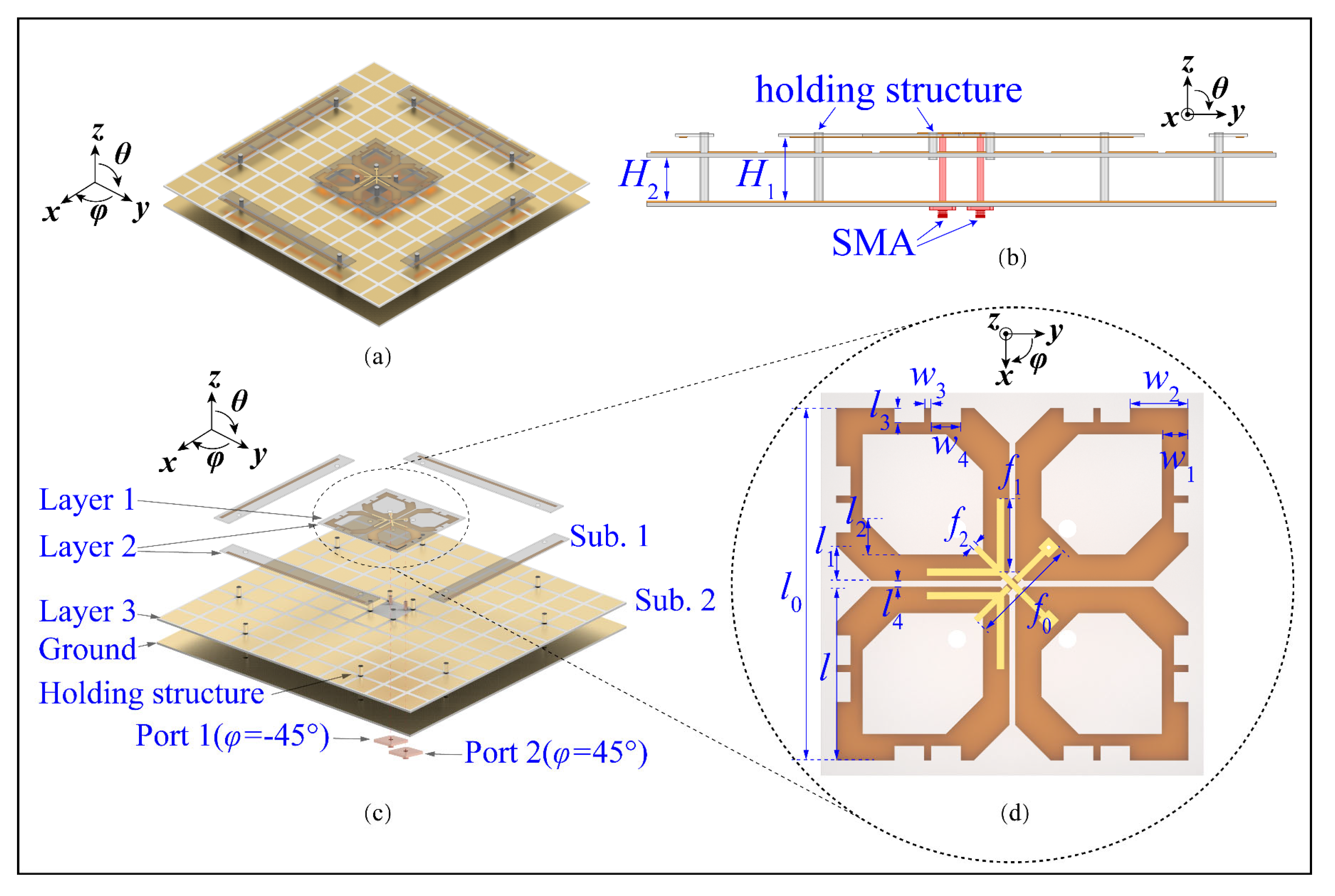
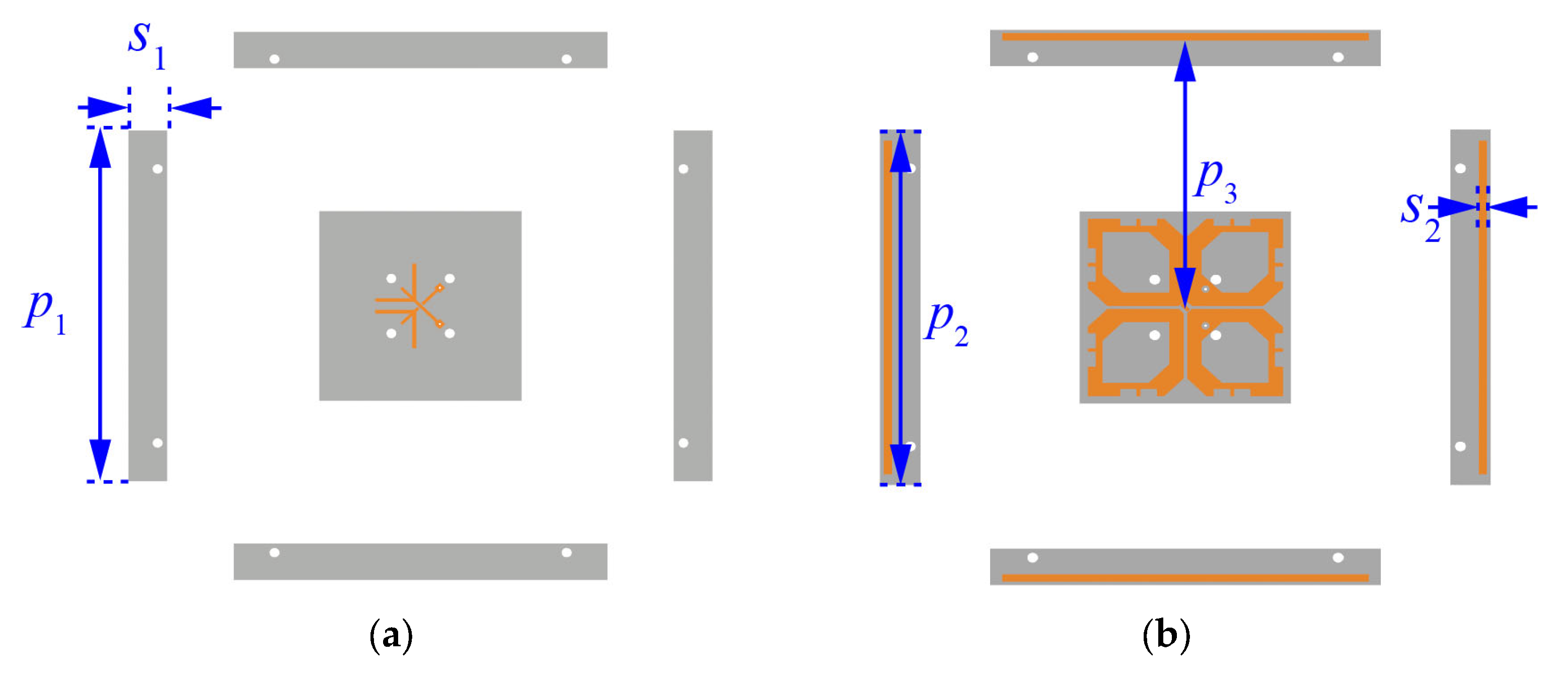
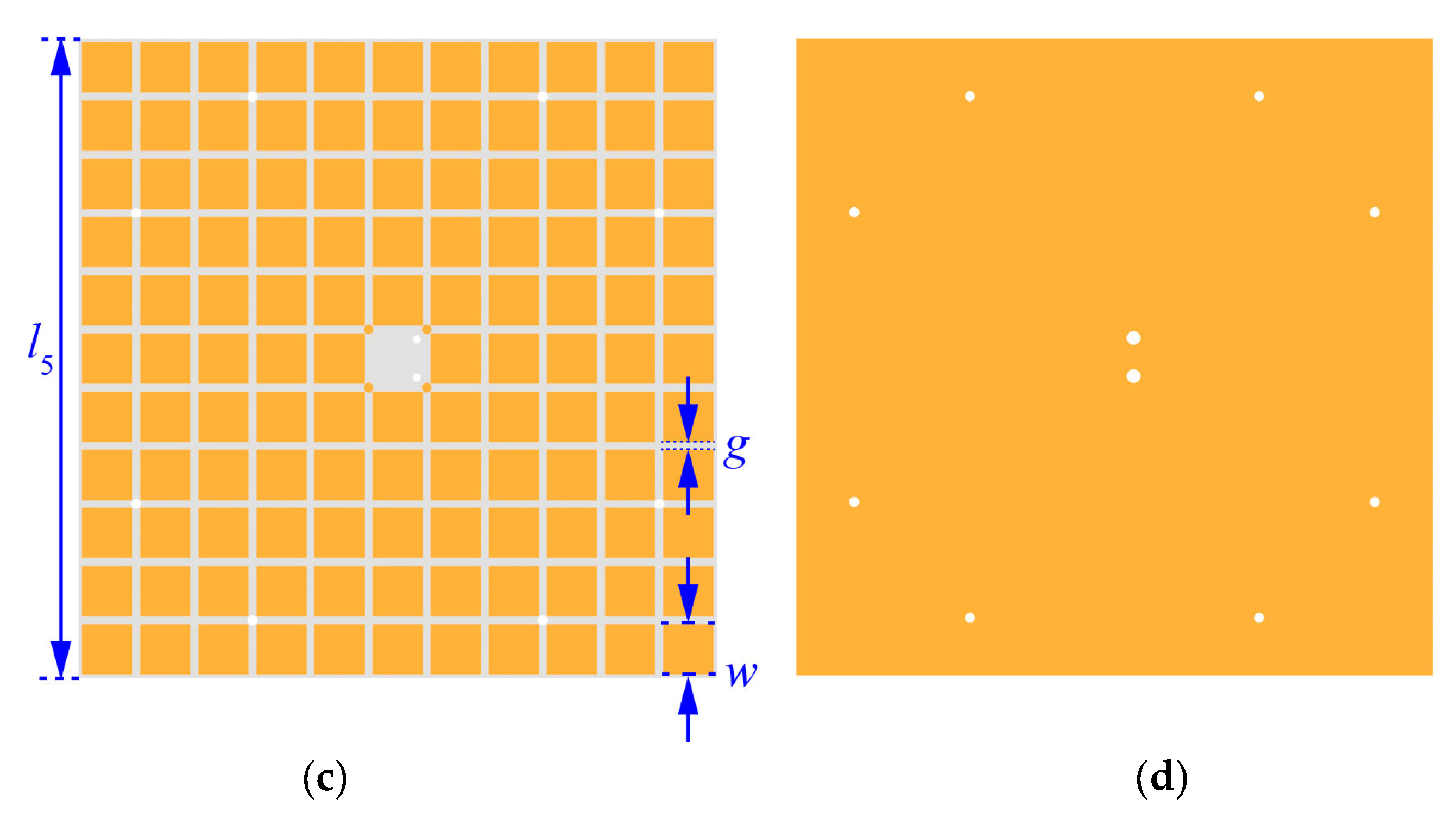
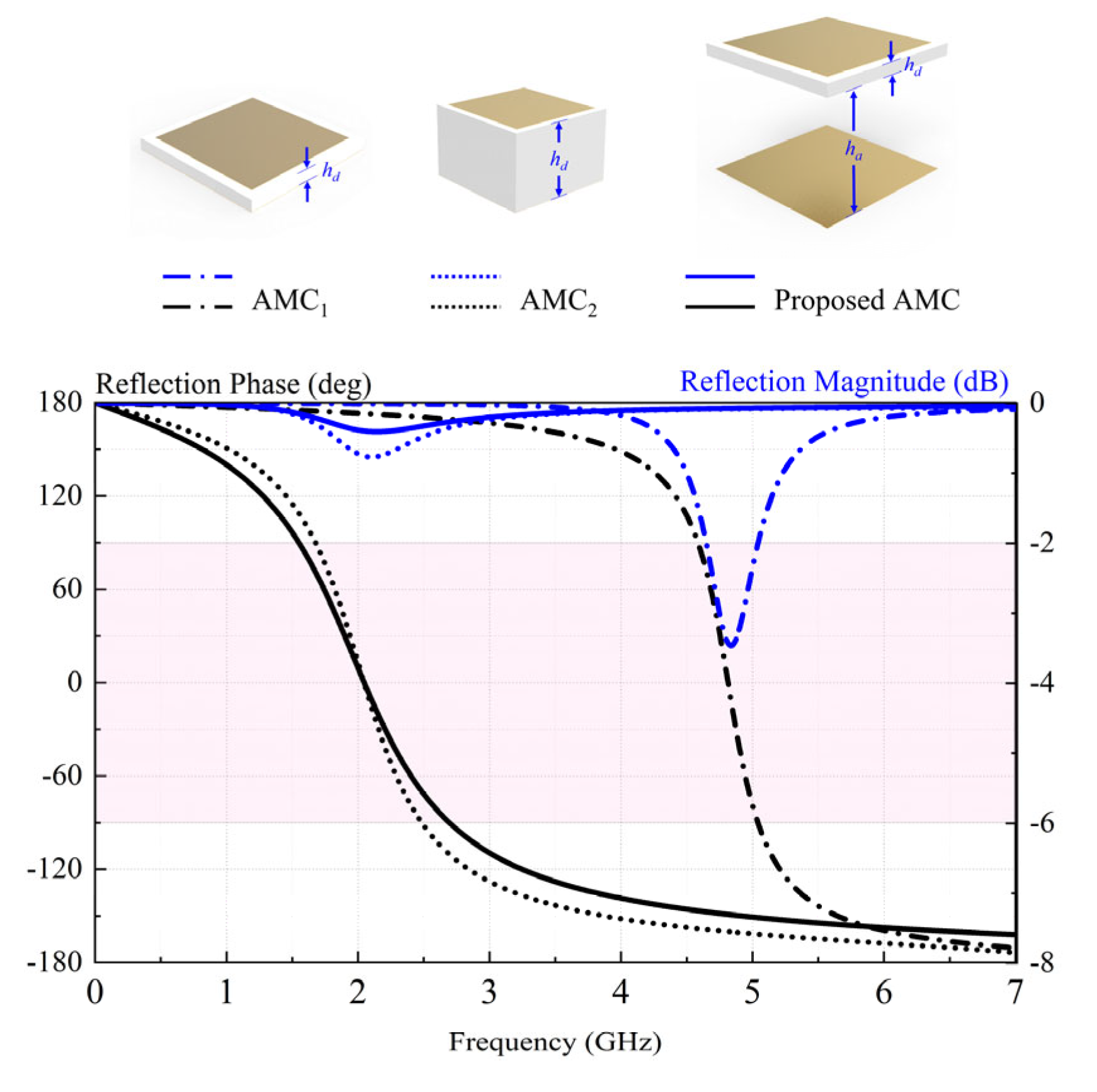

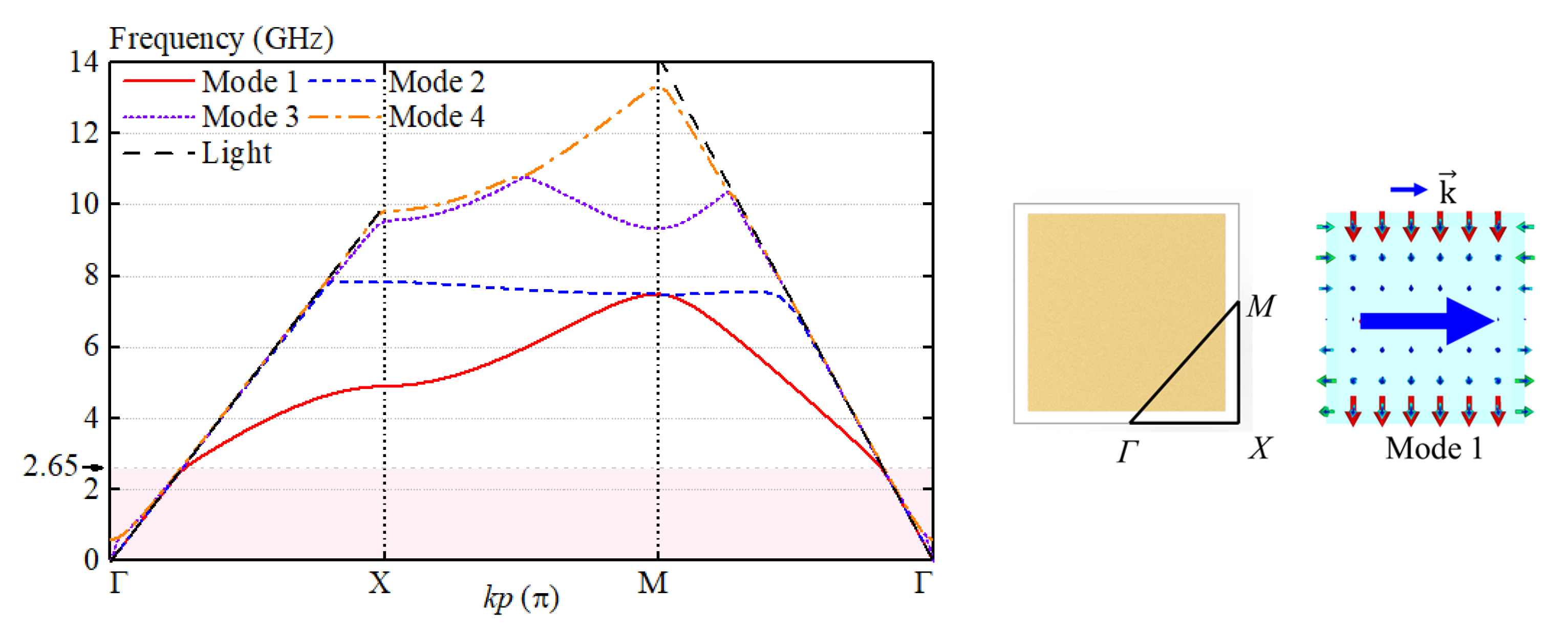

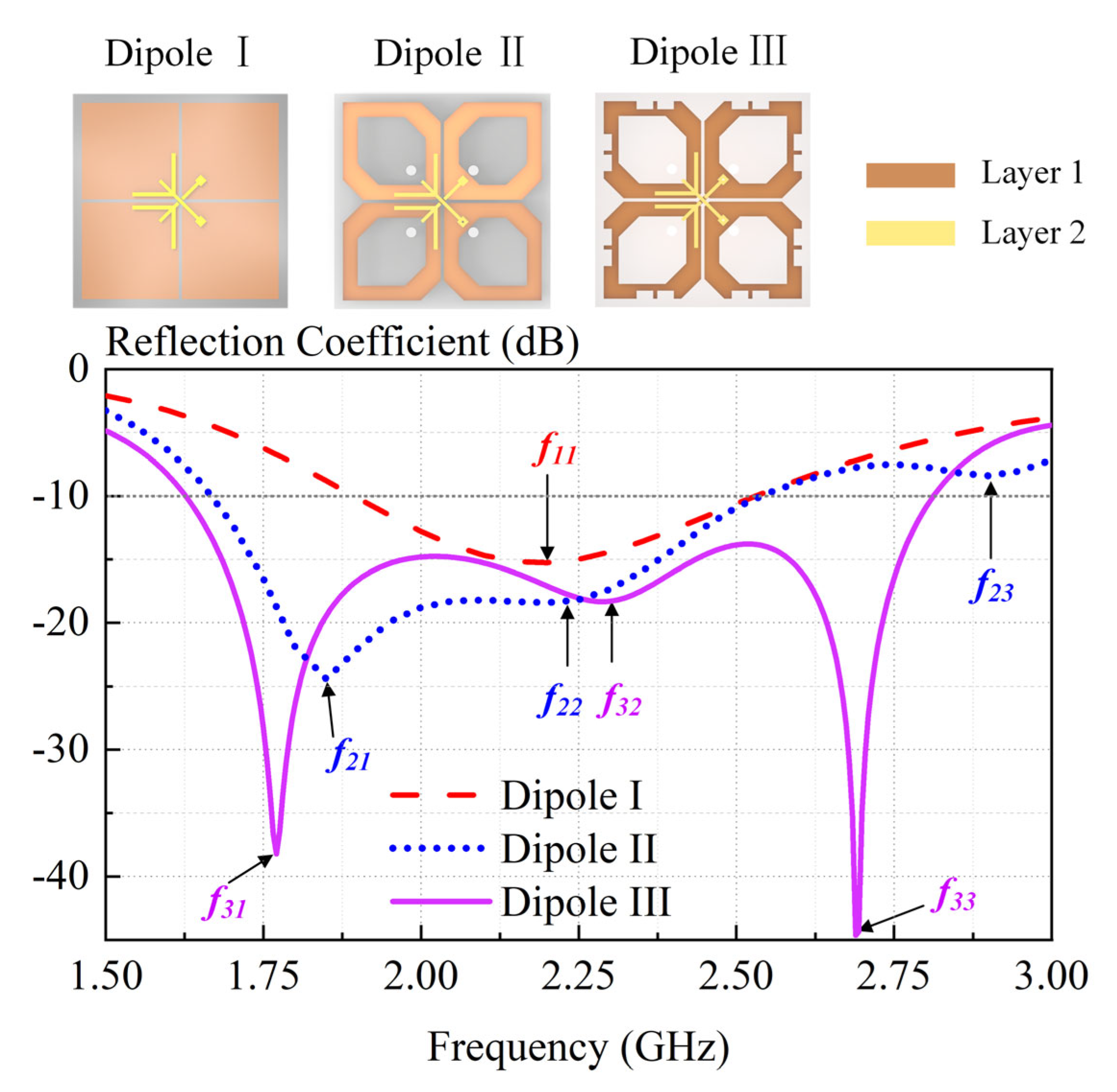
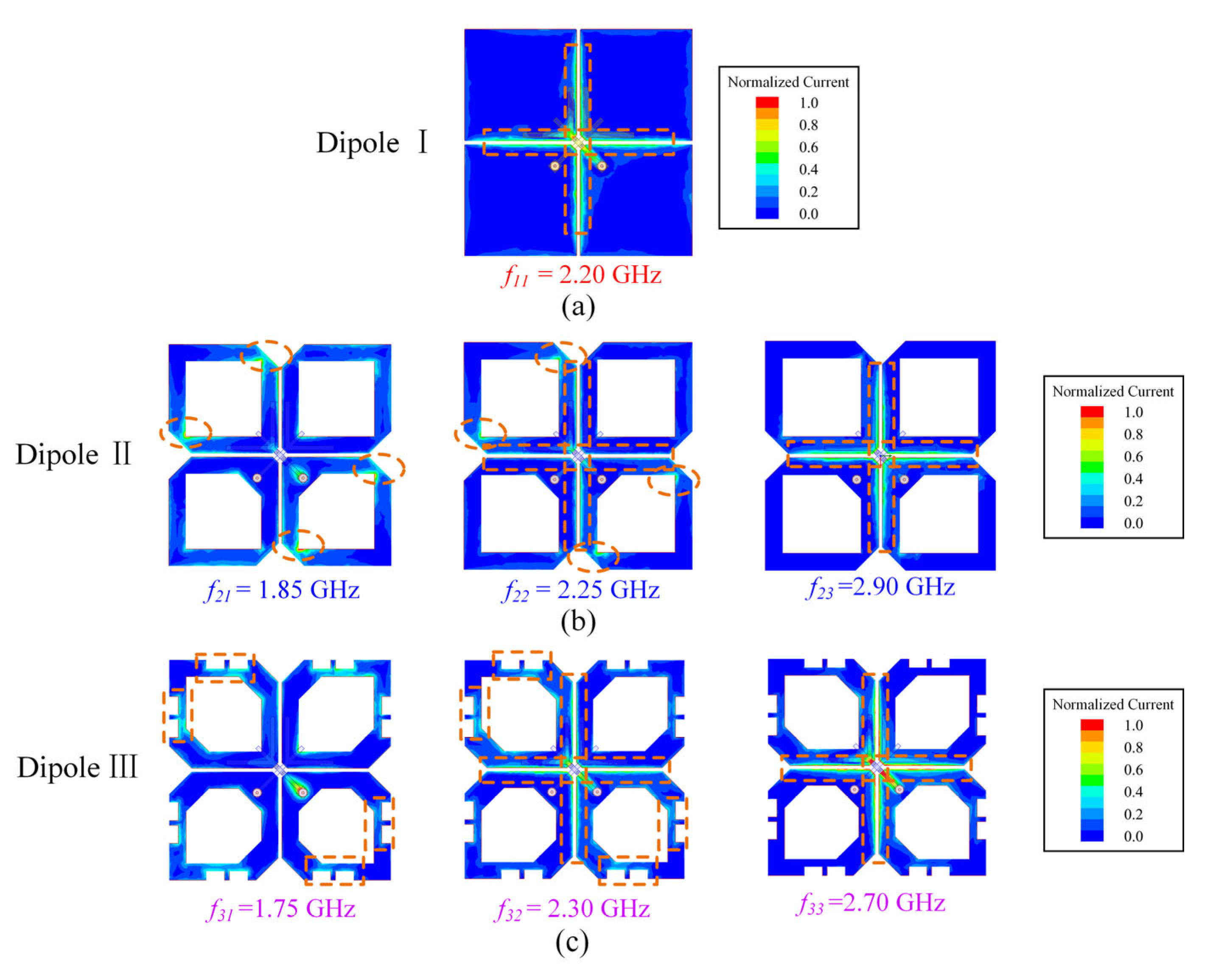

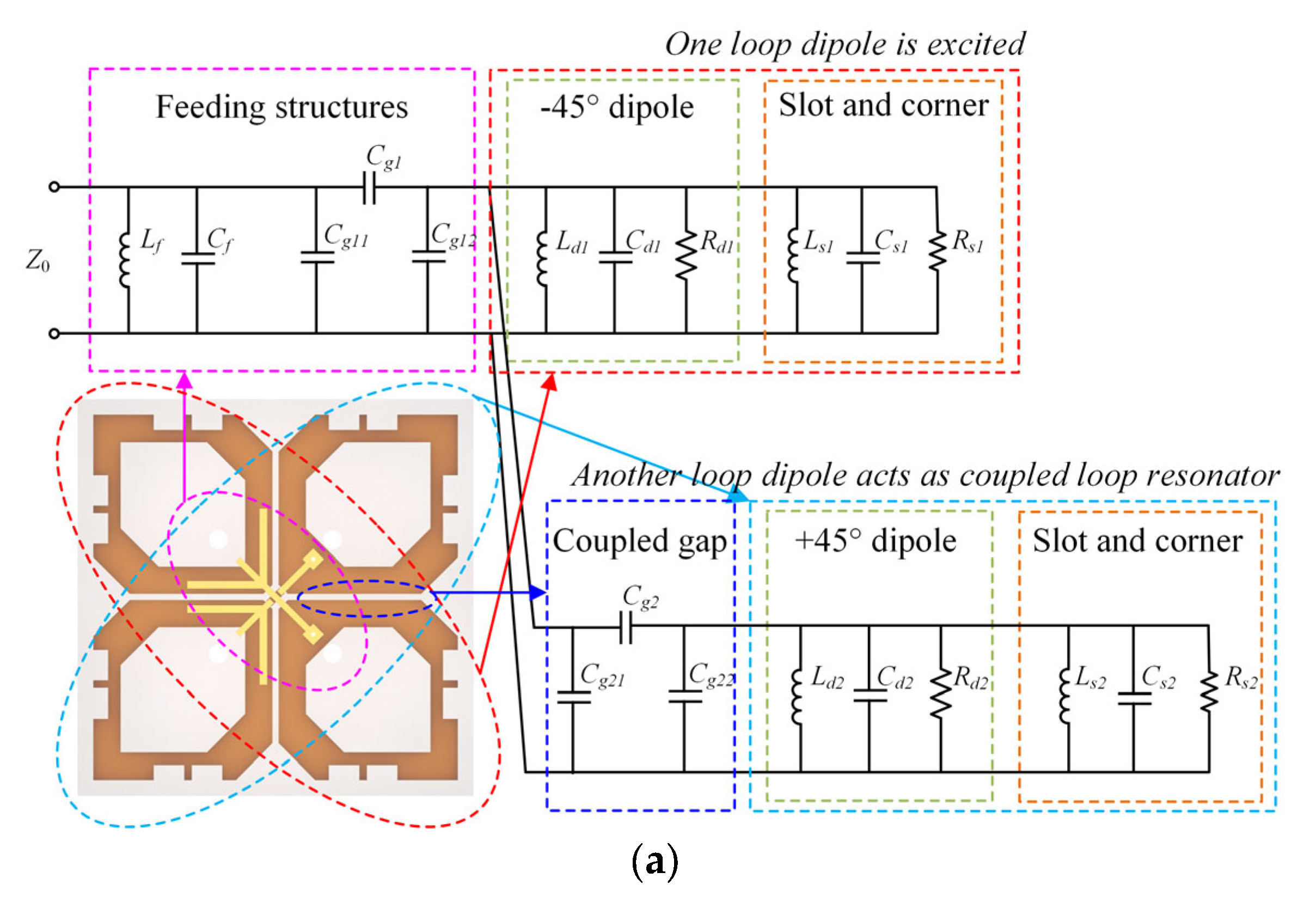

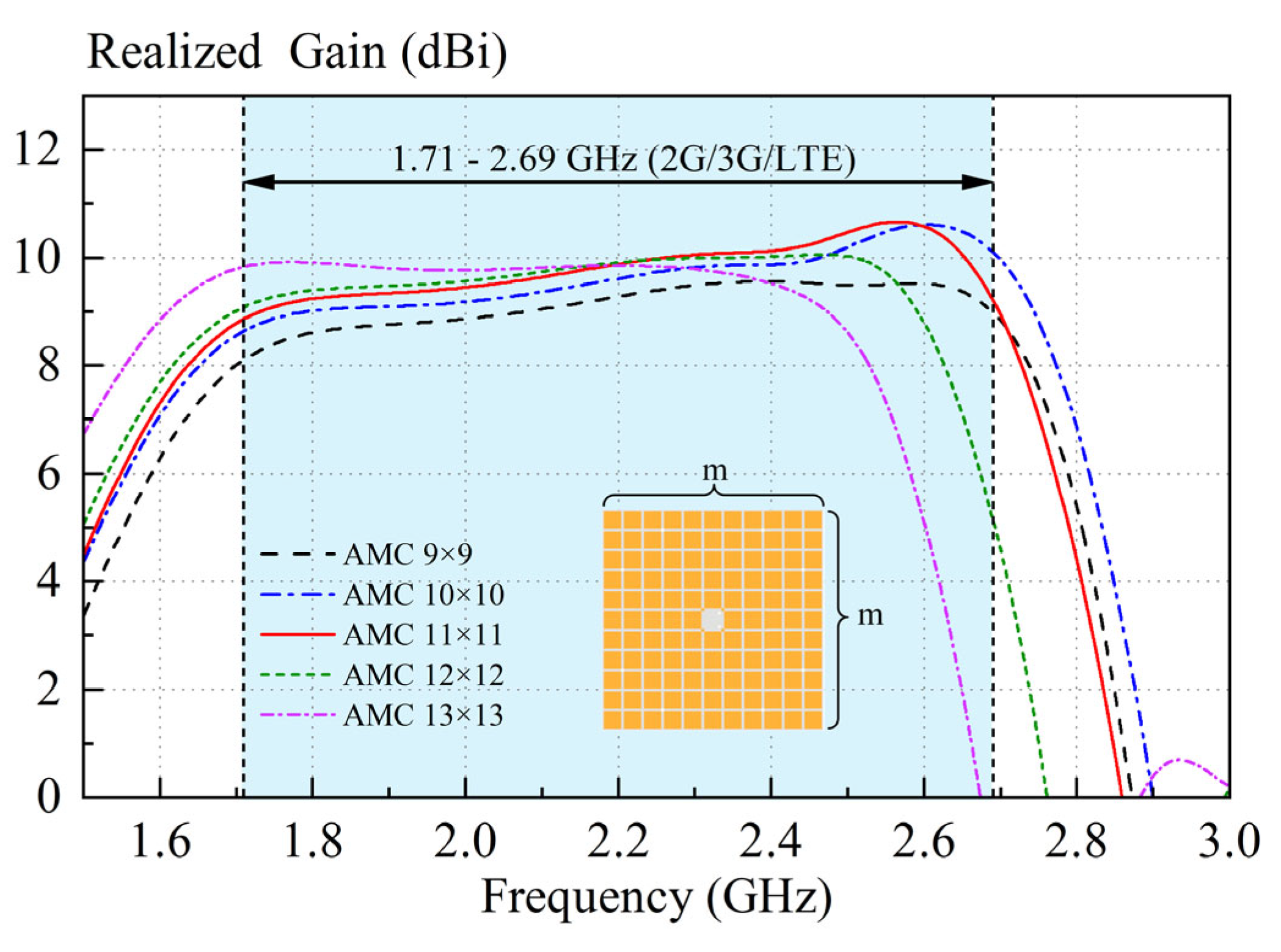
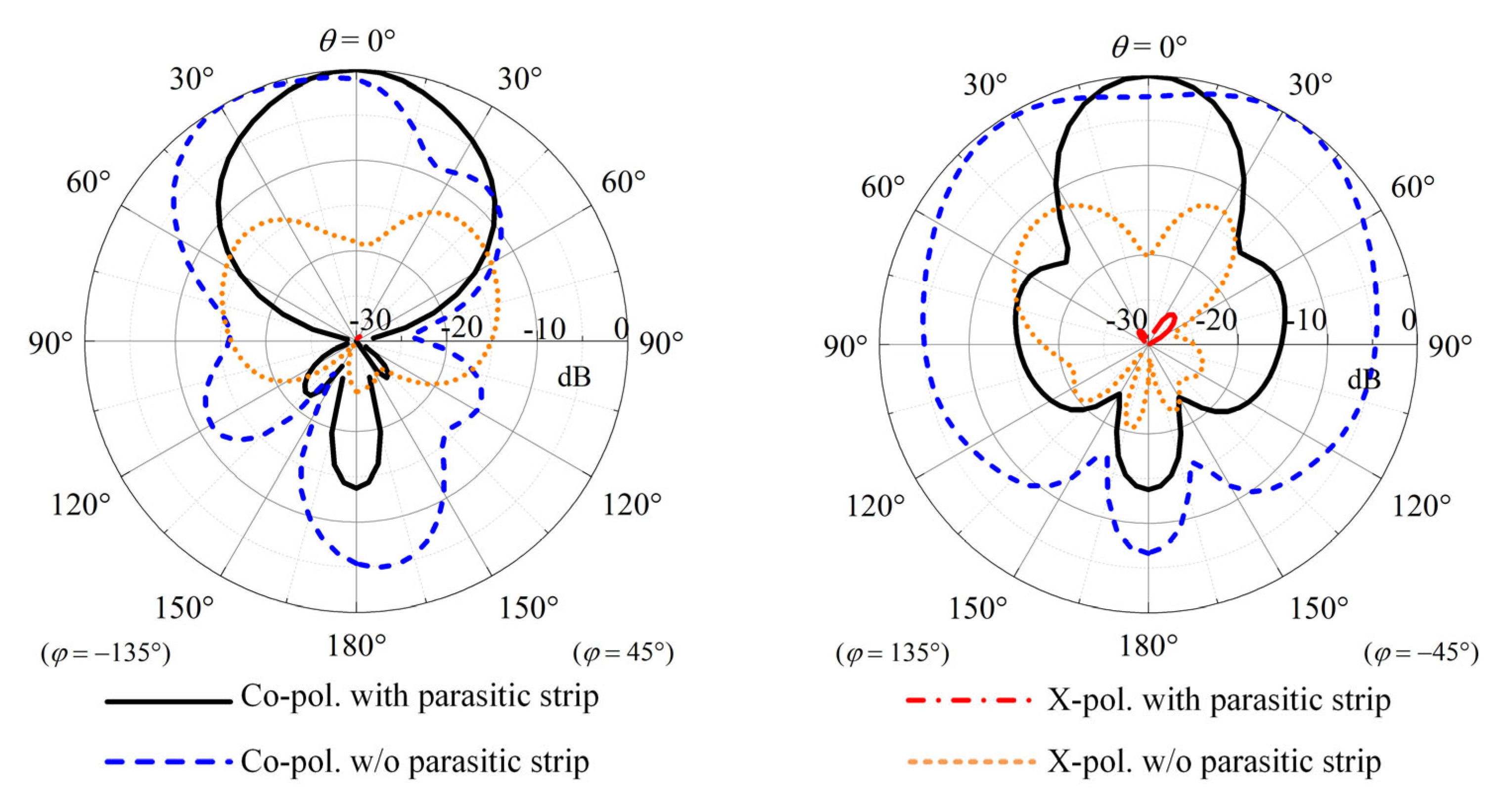

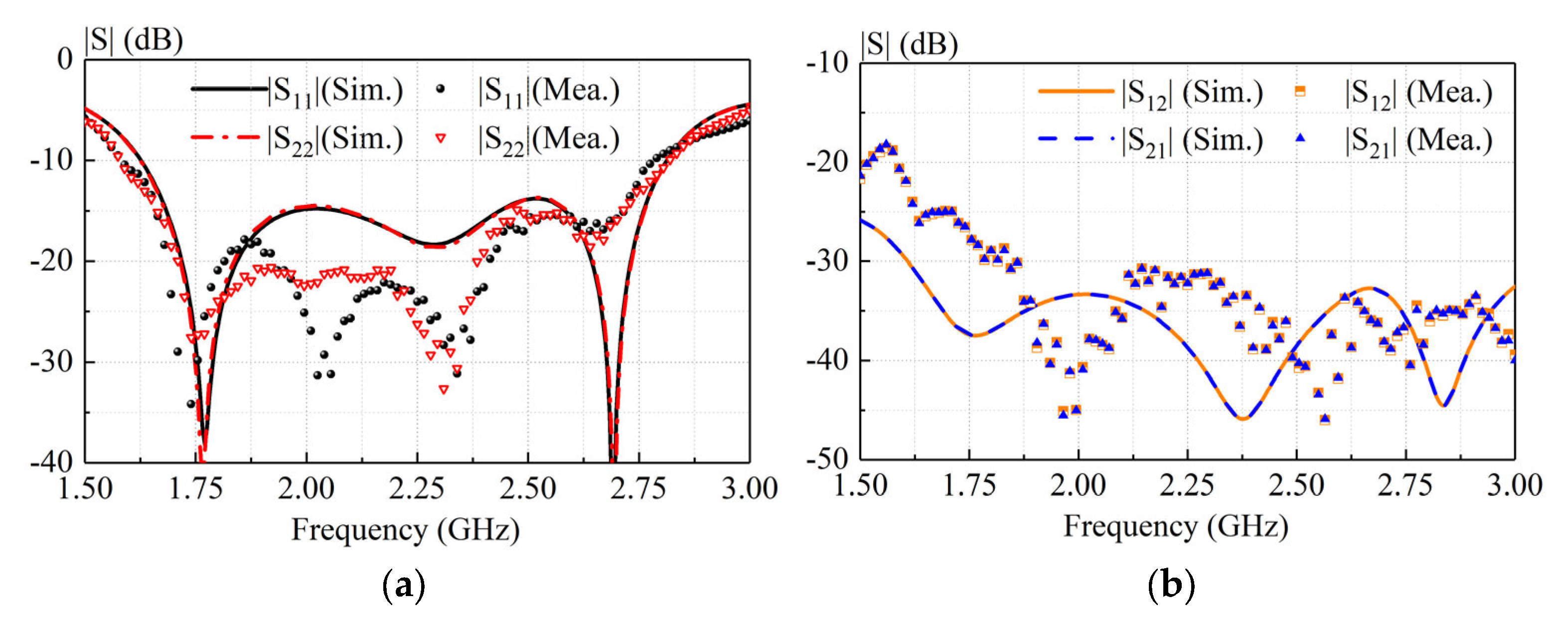
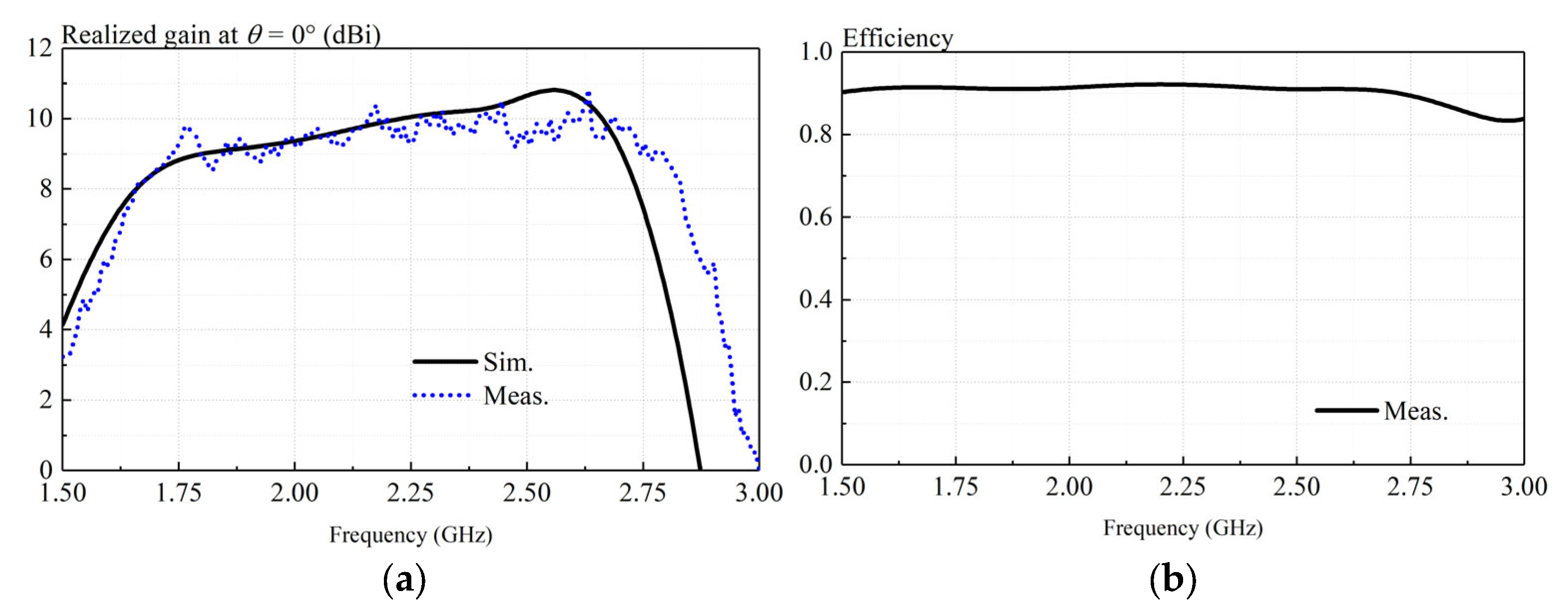

| Ref. | −10-dB Impedance Bandwidth | Gain (dBi) | Isolation (dB) | Antenna Efficiency | Profile (λ0) |
|---|---|---|---|---|---|
| [8] | 15.6% (2.36–2.76 GHz) | 4.6–7.2 | >22 | 65.0% | 0.09 |
| [9] | 0.46% (1.48–1.55 GHz) | <2.2 | >26 | 61.3% | 0.05 |
| [11] | 52.2% (1.70–2.90 GHz) (VSWR < 1.5) | 8.2–9.4 | >26 | N.A. | 0.26 |
| [12] | 48.7% (1.66–2.73 GHz) | 7.8–8.5 | >34 | 85.0% | 0.23 |
| [13] | 65.3% (1.67–3.29 GHz) | 7.8–8.8 | >32 | 90% | 0.26 |
| [14] | 74.9% (1.31–2.88 GHz) | 7.8~9.1 | >30 | N.A. | 0.35 |
| [21] | 56.3% (1.67–2.98 GHz) | 6.7–7.6 | >25 | 80% | 0.13 |
| [22] | 49.4% (1.69–2.80 GHz) | 6.8–9.8 | >27 | 86% | 0.15 |
| This work | 55.4% (1.58–2.79 GHz) | 8.3–10.8 | >30 | 90% | 0.13 |
Disclaimer/Publisher’s Note: The statements, opinions and data contained in all publications are solely those of the individual author(s) and contributor(s) and not of MDPI and/or the editor(s). MDPI and/or the editor(s) disclaim responsibility for any injury to people or property resulting from any ideas, methods, instructions or products referred to in the content. |
© 2023 by the authors. Licensee MDPI, Basel, Switzerland. This article is an open access article distributed under the terms and conditions of the Creative Commons Attribution (CC BY) license (https://creativecommons.org/licenses/by/4.0/).
Share and Cite
Feng, H.; Li, M.; Zhang, Z.; Fu, J.; Zhang, Q.; Zhao, Y. Low-Profile Broadband Dual-Polarized Dipole Antenna for Base Station Applications. Sensors 2023, 23, 5647. https://doi.org/10.3390/s23125647
Feng H, Li M, Zhang Z, Fu J, Zhang Q, Zhao Y. Low-Profile Broadband Dual-Polarized Dipole Antenna for Base Station Applications. Sensors. 2023; 23(12):5647. https://doi.org/10.3390/s23125647
Chicago/Turabian StyleFeng, Hao, Mengyuan Li, Zhiyi Zhang, Jiahui Fu, Qunhao Zhang, and Yulin Zhao. 2023. "Low-Profile Broadband Dual-Polarized Dipole Antenna for Base Station Applications" Sensors 23, no. 12: 5647. https://doi.org/10.3390/s23125647
APA StyleFeng, H., Li, M., Zhang, Z., Fu, J., Zhang, Q., & Zhao, Y. (2023). Low-Profile Broadband Dual-Polarized Dipole Antenna for Base Station Applications. Sensors, 23(12), 5647. https://doi.org/10.3390/s23125647






